The Meta Quest Pro is a brand new VR headset and next-generation device from Meta, but how much better is it than the Quest 2? In this guide, I’ll compare everything about the Meta Quest Pro vs Quest 2 virtual reality headsets so that you can decide if the Pro is worth the extra cost or not.
I’ll go over:
- Design
- Controllers
- Functionality
- Price
and more! If you think one headset is better than the other, comment down below and let me know.
If there is any part of the Meta Quest Pro vs Quest 2 I didn’t cover, let me know and I will add it to this guide.
Meta Quest Pro vs Quest 2 Quick Comparison Table
| Meta Quest Pro | Meta Quest 2 | |
| Design | Fixed head strap Thinner pancake optics | Adjustable head strap Traditional fresnel lenses |
| Processor | Qualcomm Snapdragon XR2+ | Qualcomm Snapdragon XR2 |
| Display Resolution | 1800 x 1920 per eye | 1830 x 1920 per eye |
| Lenses | Pancake | Fresnel |
| Storage | 256 GB | 128 or 256 GB |
| Field of View | 106 degrees | 90 degrees |
| IPD | 55-75 software adjustable | 58, 63, or 68 mechanical adjustable |
| Refresh Rate | 90 Hz max | 120 Hz max |
| Audio | 360-degree spatial audio Built into head strap | Build into head strap |
| Controllers | Pro Touch Controllers w/ internal processor, stylus tip attachment | Pro Controllers |
| Weight | 722 grams | 503 grams |
| Battery Life | 2 hours | 4 hours |
| Tracking | Inside-out Internal face and eye tracking | Inside-out |
| Mixed Reality | Color Passthrough | Black and White Passthrough |
| Price | $1,499 | $399 or $499 |
| Buy Now | Click Here | Click Here |
How to Buy the Meta Quest Pro
The Pro headset was announced during the Meta Connect 2022 keynote speech by Mark Zuckerberg. It was released two weeks later on October 25, 2022.
You can buy it from the official website or worldwide on Amazon. Select retailers around the world, such as Best Buy in North America, are also selling the hardware.
No products found.
How to Buy the Meta Quest 2
The Quest 2 was announced during the 2020 Connect keynote by Mark Zuckerberg. It is the successor to the Quest 1.
You can buy it from the official website or worldwide on Amazon. Select retailers around the world, such as Best Buy in North America, are also selling the hardware.
No products found.
Quest Pro vs Quest 2 Design
The Quest Pro is an upgraded version of the Quest 2 designed for VR business and super users. This all-black headset comes with a plastic strap that has extra padding and accommodates the built-in battery. The battery positioning gives the headset a better weight distribution around your head, instead of the way it’s front-loaded on the Quest 2.
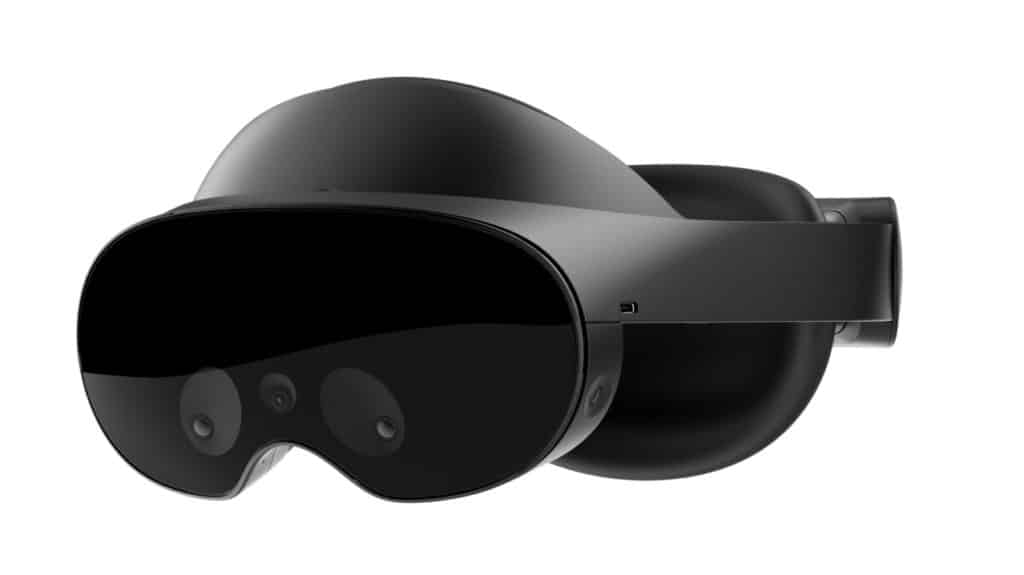
On the other hand, the all-white Quest 2 has all of its major components housed in the front on our face. This can make the headset put a lot of pressure on your face, but Meta has created the default strap and and an upgraded elite strap to provide some counterbalance.
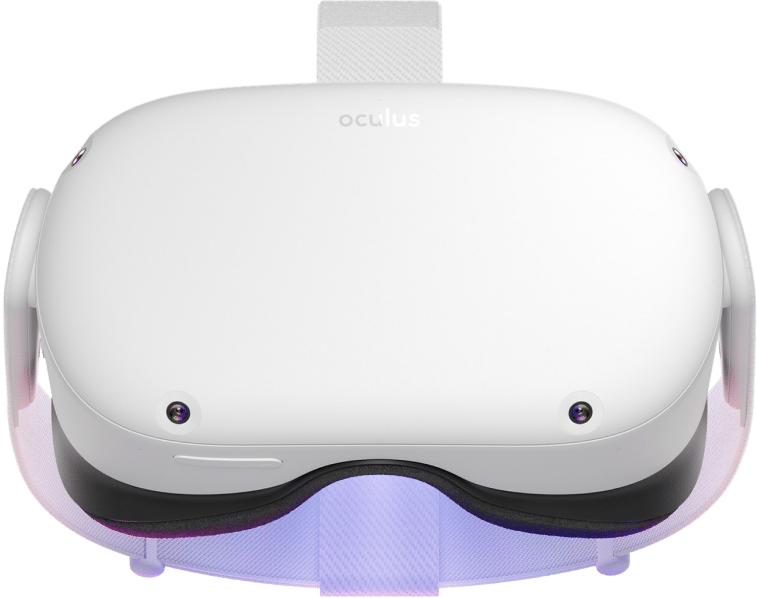
Also, you will notice a difference in how the two headsets sit on your face. The Quest Pro has detachable light blockers that you can remove and see the real world in your peripheral vision. The Quest 2 is designed to sit comfortably on your face and block out distractions from the outside world.
Winner: Quest Pro
Processor
The Quest Pro uses the Qualcomm Snapdragon XR2+ processor. Since Meta and Qualcomm announced their partnership to work together in 2021, it’s the first system-on–a-chip they’ve developed. The
Qualcomm Snapdragon XR2+ is 50% more powerful than the XR2 found in the Quest 2.The XR2 was an upgrade over the Snapdragon 835 found in the original Quest 1.

The Pro features 12 GB of RAM, which is double what the Quest 2 contains at 6 GM.
Winner: Quest Pro
Display Resolution and Lenses
The Quest Pro uses all-new pancake lenses, which makes the headset 40% slimmer than the Quest 2. According to Meta, Pancake lenses reduce the space required to display images in a wearer’s head and fold light inside the module.
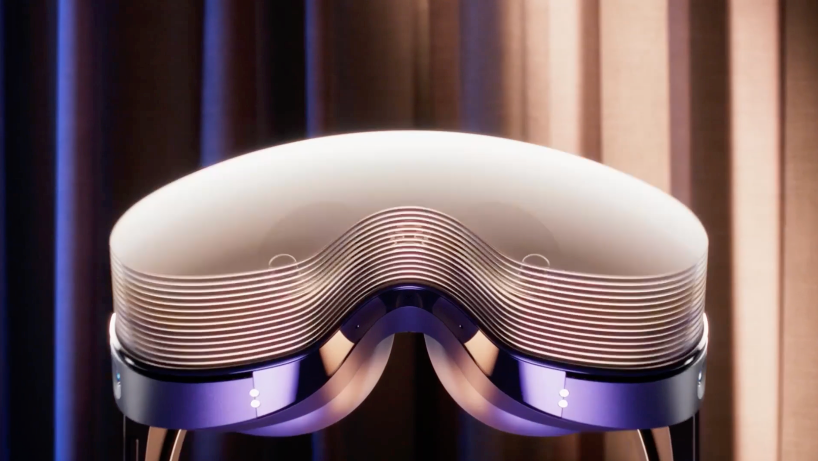
For the display, Meta says the Quest Pro is equipped with two mini-LED display panels with 1800 x 1920 pixels per eye. The resolution offers more pixels per degree and inch. Plus, it has around 75% more contrast than the Quest 2. The Quest Pro delivers a sharper, crisp image with finer details. As well, when the passthrough camera is activated, the headset offers more realism and a vibrant color palette.
The Quest 2 uses Fresnel lenses and features a fast-switch LCD screen at a resolution of 1832 x 1920 per eye. At this resolution, the display will eliminate any black space between each pixel so that your vision can be clear and crisp.
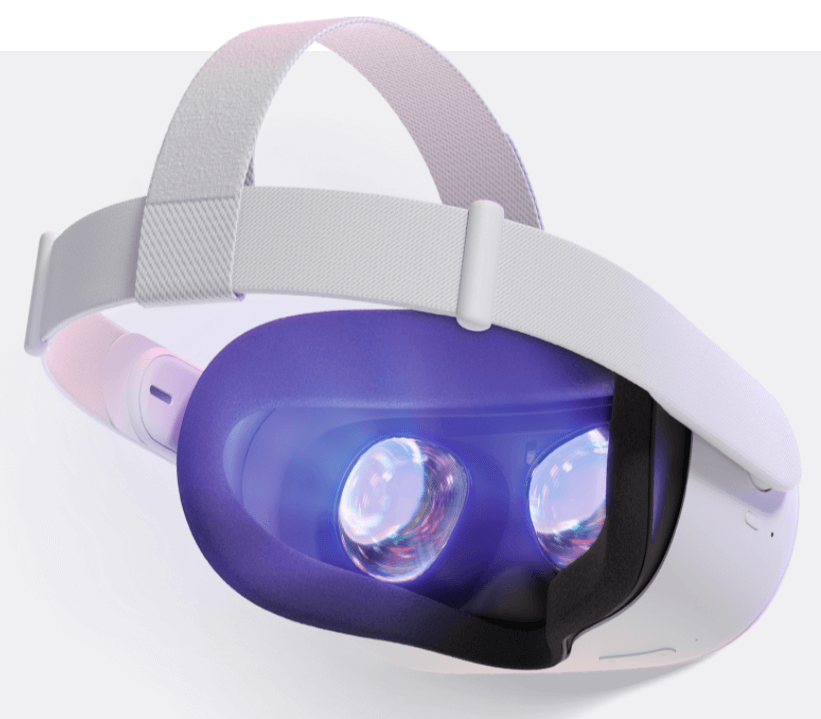
Pancake lenses are driving the size of VR headsets down, which is exciting for virtual reality fans.
Foveated Rendering
Additionally, the Quest Pro and Quest 2 both use foveated rendering to improve the quality of pixels where your eyes are looking and to blurry pixels in the corner of the display. The Pro headset has dynamic foveated rendering, which renders the full-resolution on the display and then uses eye tracking to blur areas on the fly. It can do this thanks to its internal eye tracking cameras.
On the other hand, the Quest 2 has fixed foveated rendering, which predetermines the focus area in the software.
Winner: Quest Pro
Hard Drive Options
The Quest Pro features only one hard drive option of 256GB.
The Quest 2 has either 128GB or 256GB of storage space, depending on what you need. The 256 GB version costs an extra $100 to buy.
With the size of VR games increasing as the quality does, this doesn’t feel like enough space for either headset. And as Meta introduces new concepts into its metaverse like home environments, it commands more space on your headset for system files.
I recommend going with 256 GB no matter which headset you buy.
Field of View
The Quest Pro has a field of view of 106 degrees horizontal and 96 degrees vertical. This is an upgrade from the Quest 2, which has a field of view of 90 degrees for both horizontal and vertical.
Winner: Quest Pro.
Headstrap
The Quest Pro has a halo strap that fits perfectly around your head. The strap cannot be swapped out like most VR gamers usually do with the Quest 2 strap. Unlike the Quest 2, the Quest Pro strap doesn’t have a top loop and is fixed to the headset’s frame. Meta claims that the default headstrap is more comfortable, thanks to the improved weight distribution on the Quest Pro from the pancake lenses.

The Quest 2 features a soft strap that can easily be swapped out with an Elite Strap or third-party alternative. The top strap attaches to the back of your head and has a loop that extends to the side strap. Instead of Velcro, the side straps use a two-layer adjustable strap. You have to pull the left and right straps to tighten and loosen the fit on your head.
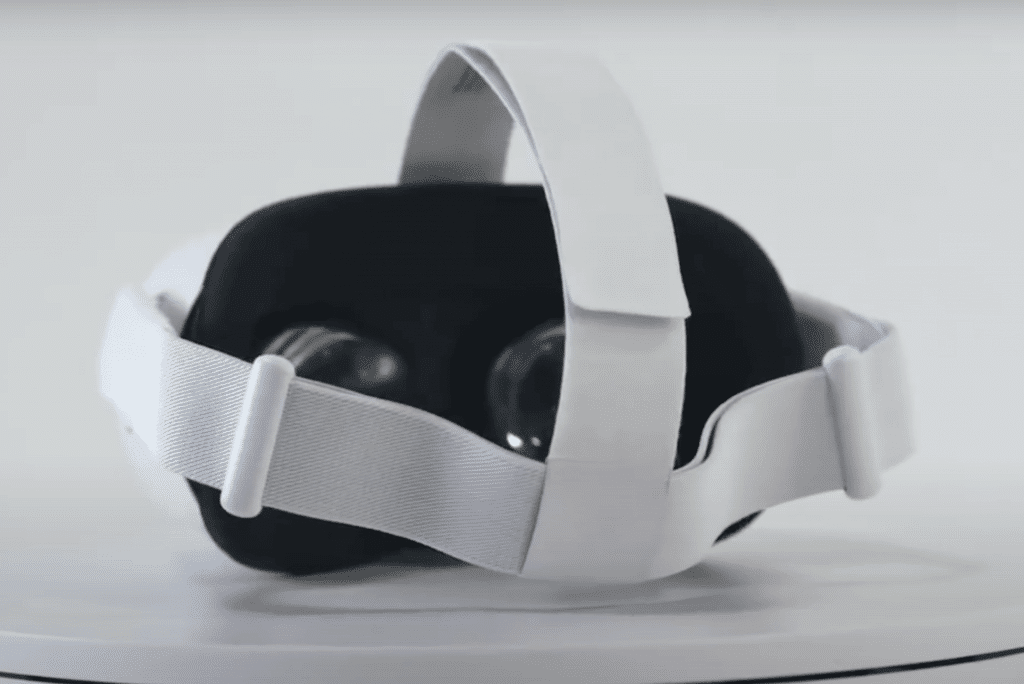
I need to spend some more time wearing the Quest Pro before giving it the win here. Being able to swap out any strap you like is a big advantage on the Quest 2.
Winner: Undecided
IPD Adjustment
The Quest Pro has an automatic IPD adjustment that swings between 55 and 75mm. The headset will automatically adjust the IPD in the software to match your eyes using the inward-facing cameras. This is also handy if you plan on letting your friends play on the headset.
The Quest 2 uses a manual three-slot IPD adjustment, allowing you to set the IPD by manual pushing the edges of the lenses to fit into each slot. The three options are either 58mm, 63mm, or 68mm. The software will then adjust the pixels to make them clear to the eyes.
This design was a cost saving measure by Meta to remove a manual adjustment dial on the headset. Fans will be happy to see automatic adjustment return in the Quest Pro.
Winner: Quest Pro
Refresh Rate
The Quest Pro has a maximum refresh rate of 90Hz, while the Quest 2 comes at a max refresh rate of 120Hz. Meta has said that a higher refresh rate is better because it removes any flicker in the video. Plus, it’s more comfortable when you are playing longer game sessions.
For those reasons, its curious why the Quest Pro doesn’t support 120 Hz. It’s possible that it can be turned on in the software settings later. However, I think its disabled because of battery life concerns on the Quest Pro, which is another issue I’ll get to below!
Winner: Quest 2
Audio
Audio-wise, the Quest Pro features a built-in mic, 360-degree spatial audio built into the head strap, and twin right and left 3.5 mm jacks for headphones. Even though this won’t satisfy gamers who desire maximum immersion, Meta has said the Quest Pro has some level of improvements in the speakers that will deliver deeper bass tones. The company also made it known that, compared to the Quest 2, it has reduced the headset’s outbound sound by 10dB.
The Quest 2 also features a mic, in-head strap speakers, and a single 3.5mm aux output.
Quest Pro vs Quest 2, neither headset has amazing audio built into it. If you care enough, you’ll look to buy some external headphones to wear. The decision to go with twin audio ports for each ear on the Quest Pro is a curious one. It limits the number of options you can purchase for the Pro.
Winner: Neither
Size and Weight
The Quest Pro is 50% heavier than the Quest 2. The Quest Pro weighs 722g, while the Quest 2 comes in at 503g.
However, the weight of the Quest 2 may jump if you remove the default soft strap and add a better strap to the device. For instance, the Elite Strap will increase the Quest 2’s weight to around 625g, which is closer to the weight of the Quest Pro.
Because of the pancake lenses and smaller frame, the Quest Pro fits a lot nicer on your face. It has better weight distribution and doesn’t feel like the heavier device.
Winner: Quest 2.
Battery Life
The Quest Pro boasts a 5,000 mAh battery capacity that delivers between 1.5 and 2 hours of battery life. However, two Meta executives publicly declared on Twitter that the headset’s built-in battery could serve for at least 4-5 hours. The caveat here is that this is only true when playing games and apps that don’t take advantage of the extra sensors and functionality on the Quest Pro. In that case, you’re better off saving your wallet and just buying a Quest 2 instead.
The Quest Pro comes with a wireless charging dock to simultaneously promote easier charging of your headset and controllers on your desk. This does make it easier to grab your hardware and step into the metaverse when you want to play.
The Quest 2’s 3,640 mAh battery pack lasts between 2 and 3 hours of playtime. You can also increase the battery life if you buy a custom head strap which comes with an expanded battery. For this reason, I like the Meta Quest 2 better.
Winner: Quest 2
Controllers
The Meta Quest 2’s Oculus Touch controllers are white and feature a capacitive joystick, index finger, middle-finger triggers, face buttons, and a touchpad. They have a halo ring around the top of the controller, which houses all of the infrared and motion sensors that the headset uses to track your position in space.

On the other hand, the Quest Pro’s black controllers have similar features to the Oculus Touch controllers, except for the large tracking ring. The design is more ergonomic and perfectly folds into the hand’s curvatures. The Pro Touch controllers are slightly heavier compared to the controllers that the Quest 2 uses because they contain their own processor for tracking its sensors.
This allows the Pro Touch controllers to understand your position and movement in space without the need for the headset. The Pro controllers have better tracking, especially if you hold them behind your back and out of the view of the VR headset.
The Pro controllers also feature stylus tip slots on the bottom so that you can more accurately draw and do design work with them.
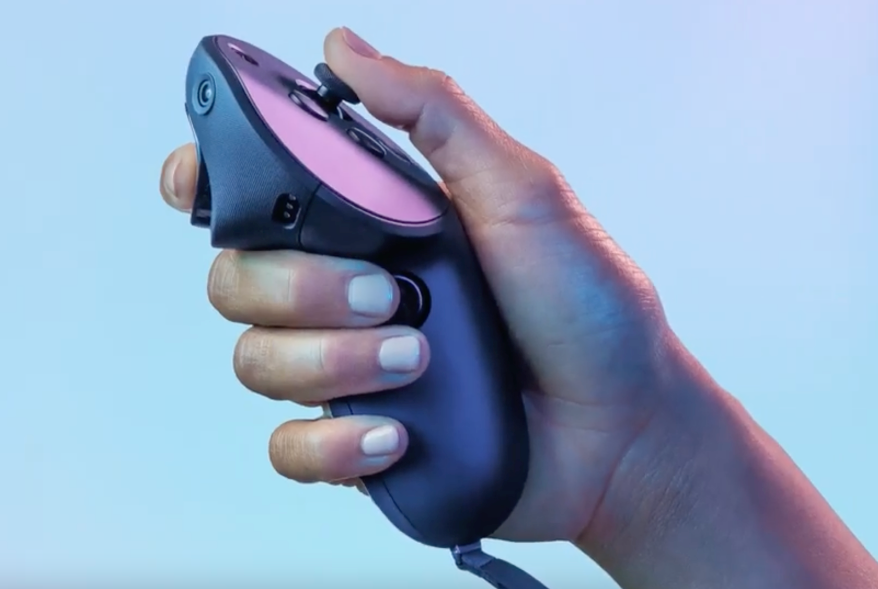
Winner: Quest Pro
Tracking
Both VR headsets feature inside-out tracking with no external cameras required to monitor your environment. For the Quest Pro, two additional inward-facing cameras make eye and facial tracking possible. The camera arrangement makes the IPD of the headset automatically align with your eyes. Plus, you will enjoy accurate facial expressions when playing social experience games. The Quest Pro has 5x external and 5x internal onboard cameras.
Meanwhile, the Quest 2 has four external cameras for tracking your movement and position.
Both external camera setups ensure that you stay within your play space, so you need to draw a safe guardian when you put on either headset.
Winner: Meta Quest Pro
Mixed Reality
The Quest Pro features a few mixed reality experiences that buyers might like. It features full color-passthrough cameras so that you can play games that look like they are happening right into your house. Light blockers around the edges of the headset can be removed so that you can view your surroundings in your peripheral region.
These features are the start of Meta’s push into augmented and actual reality. They’ve been open about a vision where you can wear your headset all day long.
The Quest 2 has only black and white passthrough cameras and fixed light blockers.
Winner: Quest Pro
Price
The Quest Pro is the most expensive VR headset produced by Meta. The headset and everything that’s contained in the box costs $1,499. In Canada, it sells for $2,299. For this price, you get:
- Meta Quest Pro Headset
- 2 Meta Quest Touch Pro Controllers
- Charging Dock
- USB-C Power Adapter
- Controller Charge Cable
- Charging Cable
- 2 Stylus Tips
- 2 Partial Light Blockers (L & R)
- Cable Clip
- Protective Cover
- Cleaning Cloth
- 2 Wrist Straps
On the other hand, the 128GB and 256 models of the Quest 2 sell for $400 and $500, respectively. The cost price of this headset used to be $100 cheaper, but Meta jacked the price up due to the rising costs of goods and services.
For this price of the Quest 2, you get:
- Meta Quest 2 Headset
- 2 Touch controllers
- USB-C Power Adapter
- Charging Cable
Winner: Quest 2
Conclusion
As you can see, the Quest Pro vs Quest 2 comparison might be a lot closer than you think. There is no doubt that the Quest Pro is the better headset. However, it is $1,000 better?
That’s for you to decide!
One awesome thing is that all games and apps by Meta are compatible with both headsets. That means you don’t need to spend the extra money in order to play the coolest games. For that reason alone, I think the Quest 2 is the better headset.
If you tend to do a lot of design work or business in the metaverse, then the Quest Pro has a number of nice enhancements. It’s the first mixed reality headset that Meta aims to release in the next few years.
Either way, a lot of the technology in the Quest Pro will eventually make its way into the Meta Quest 3, 4, and other models. And that’s exciting for everyone.


